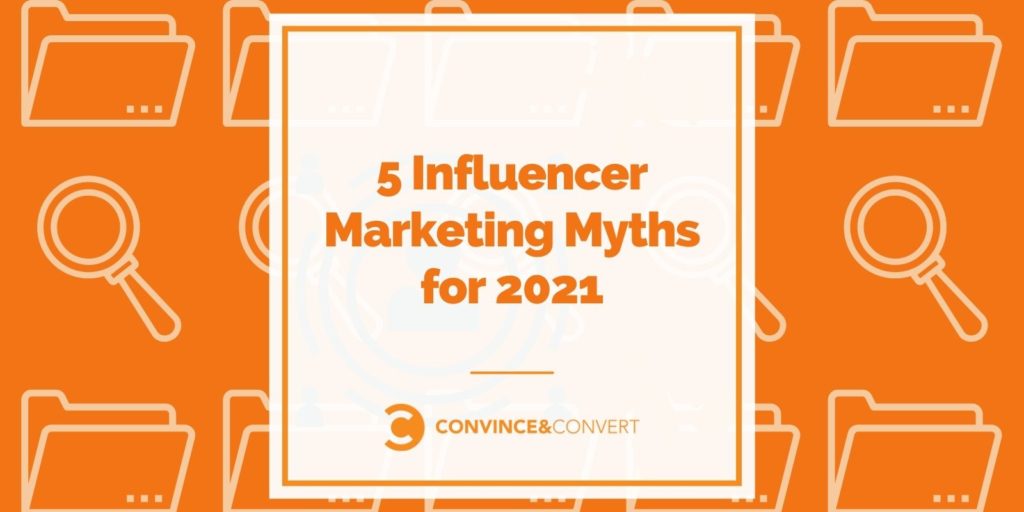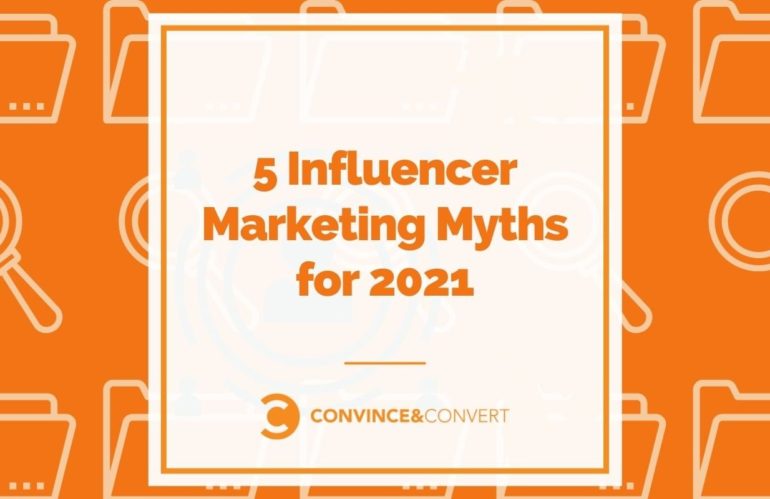
Influencer marketing is not brand-new however it is continuously altering and online marketers have ideas. Below are 5 typical influencer marketing misconceptions we’’ ve heard and wish to unmask.
.Misconception # 1: Influencer marketing is a trend.
Actually, this might hold true, sort of. Hear me out.
Post-COVID information reveals a 37% decline in brand names dealing with influencers and a 41% drop in the performance of influencer marketing.
However, brand names are still investing in influencer marketing , particularly through nano and micro-influencers. I see this shift as a more tactical method to influencer marketing and a method to redefine a technique filled with concerns.
So, is influencer marketing a trend?
In regards to brand names investing great deals of cash on influencers with big followings? Possibly.
However, in my viewpoint, influencer marketing in regards to nano and micro-influencers — — particularly ones that resonate with specific niche audiences — — is here to remain &&will end up being a vital part of a tactical marketing mix.
.What does this mean for online marketers?.
Keep influencer marketing on your radar and dive deep into your personalities to see if nano and micro-influencers might link you with your audience.
.Misconception # 2: Influencer marketing is just effective for more youthful generations.
Marketers all over the world are attempting to charm the next generation of customers with influencer marketing. There are over 15 million search results for ““ influencer marketing to Gen Z. ”
.
Meanwhile, ““ influencer marketing to Gen X ” and “ influencer marketing to Boomers ” have less than 10 million outcomes integrated.
What’’ s up with that?
.
I believe it mainly boils down to the misconception that influencer marketing is just for more youthful generations, which is merely not real. older generations are investing more and more time on social media and moving their shopping practices towards online retail, shipment services, and memberships which suggests brand names have more chances than ever to engage throughout generations. Gen X and Boomers likewise manage the huge bulk of non reusable earnings in the United States.
While some online marketers are composing methods around more youthful influencers, terms like ““ Grandfluencers ” and “ senior influencers ’ are ending up being more popular. Influencers like Joan MacDonald and Helen Winkle are over here living their finest lives as 70-year-old-plus influencers with nearly 5 million fans integrated.
.
Gen X likewise has some amazing influencers like Arlinda McIntosh and Ana Pejkanovic .
. What does this mean for online marketers?.
If your audience consists of Gen X and/or Boomers, influencer marketing might deserve a shot.
. Misconception 3: Influencers need to have big followings to be efficient.
We covered this a bit in misconception # 1, however let ’ s dive much deeper.
.
Traditionally, influencer marketing suggests making use of a social networks user with a big following. Today, that meaning is altering.
.
While mega influencers (social users with countless fans )are the very first thing lots of people think about when theybelieve “ influencer, ” other groups are growing in appeal. There are varying viewpoints on how numerous fans each group has,” particularly in the nano and micro classifications where some online marketers state nano influencers can have as little as 500 fans and still be reliable .
. Mega: 1M+ fans. Macro: 100K+ fans. Micro: 10K+ fans. Nano: 500 to 10K fans.
While influencers normally have a conversion rate of around 3%, nano influencers are transforming at upwards of 30% in many cases.
. What does this mean for online marketers?.
Marketers must try to find chances to deal with influencers with specific niche neighborhoods and keep in mind that big followings put on ’ t equivalent much better.
.Misconception 4: Influencer marketing doesn ’ t work for B2B business.
This is merely not real.
. Linode, a cloud hosting business, has actually seen 15% -20% consumer development through their YouTube influencer method . Microsoft partnered with National Geographic professional photographers on an Instagram project that led to over 3.5 million likes and over 1K user-generated material uploads. American Express used small company owners as influencers in their Love My Store project leading to 400,000 orders ofthe Love My Store decals. Aegora, an expert market, used freelancers throughout markets to belong to an influencer project . The project produced over 500 signups. What does this mean for B2B online marketers?.
B2B online marketers must check out methods to bring influencers into their marketing, whether it ’ s through workers, clients, or social networks influencers.
. Misconception # 5: Influencermarketing has no guidelines.
In an October 2021 press release , the Federal Trade Commission stated they ’ ve formally put numerous services on notification for “ phony evaluations and other deceptive recommendations ”. The charge for deceptive customers depends on$ 43,792 per offense.
. What does this mean for online marketers?
It’suggests there are guidelines you require to follow , and you shouldn ’ t be a jerk and mislead and trick individuals. Acquaint yourself with the FTC recommendation standards and comply to prevent challenges and headaches.
. 2021 Influencer Marketing Myths Debunked!
There you have it! If a dip in the influencer swimming pool is worth expedition by you and your group, 5 misconceptions we desired to deal with so you can choose.
.
The post 5 Influencer Marketing Myths for 2021 appeared initially on Content Marketing Consulting and Social Media Strategy .
.
Read more: convinceandconvert.com
